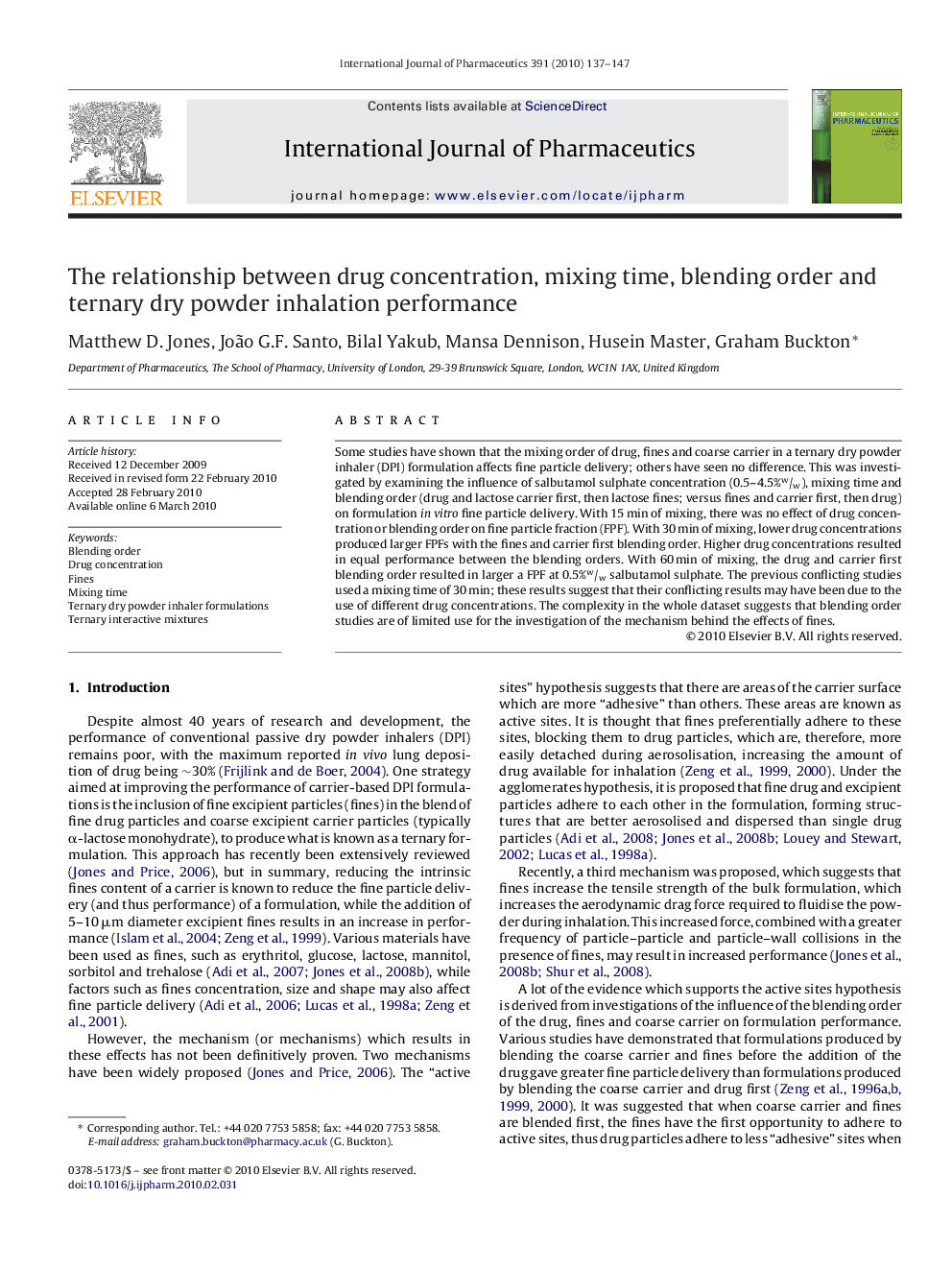| Article ID | Journal | Published Year | Pages | File Type |
|---|---|---|---|---|
| 2504105 | International Journal of Pharmaceutics | 2010 | 11 Pages |
Some studies have shown that the mixing order of drug, fines and coarse carrier in a ternary dry powder inhaler (DPI) formulation affects fine particle delivery; others have seen no difference. This was investigated by examining the influence of salbutamol sulphate concentration (0.5–4.5%w/w), mixing time and blending order (drug and lactose carrier first, then lactose fines; versus fines and carrier first, then drug) on formulation in vitro fine particle delivery. With 15 min of mixing, there was no effect of drug concentration or blending order on fine particle fraction (FPF). With 30 min of mixing, lower drug concentrations produced larger FPFs with the fines and carrier first blending order. Higher drug concentrations resulted in equal performance between the blending orders. With 60 min of mixing, the drug and carrier first blending order resulted in larger a FPF at 0.5%w/w salbutamol sulphate. The previous conflicting studies used a mixing time of 30 min; these results suggest that their conflicting results may have been due to the use of different drug concentrations. The complexity in the whole dataset suggests that blending order studies are of limited use for the investigation of the mechanism behind the effects of fines.
